#vojvodina
Text

Subotica, Serbia (by Kalman Nemet)
269 notes
·
View notes
Text
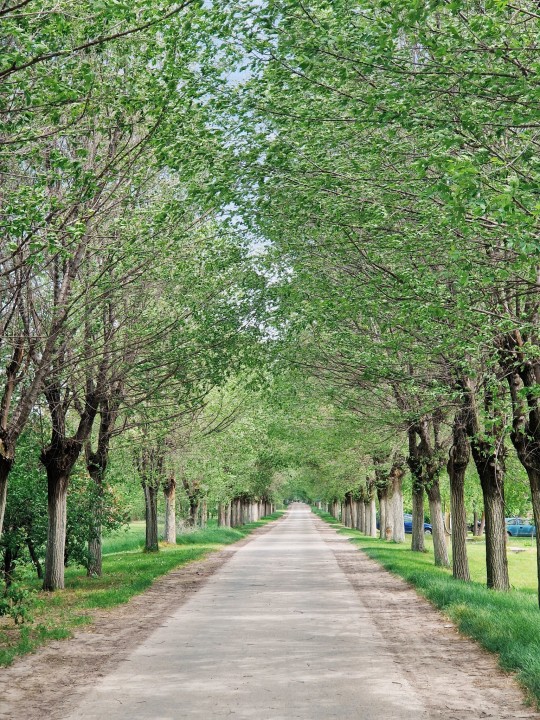
Belo Blato, Srbija
#photography#analog#photographers on tumblr#la vie en rose#original photographers#analog photography#photooftheday#la vie est belle#original photography blog#photography on tumblr#la vie boheme#la vita è bella#la dolce vita#indie#retro#girly#vintage#bohemian#boho#bohostyle#bohochic#aesthetic#belo blato#vojvodina#srbija#serbia#spring#may#trees#road
62 notes
·
View notes
Photo
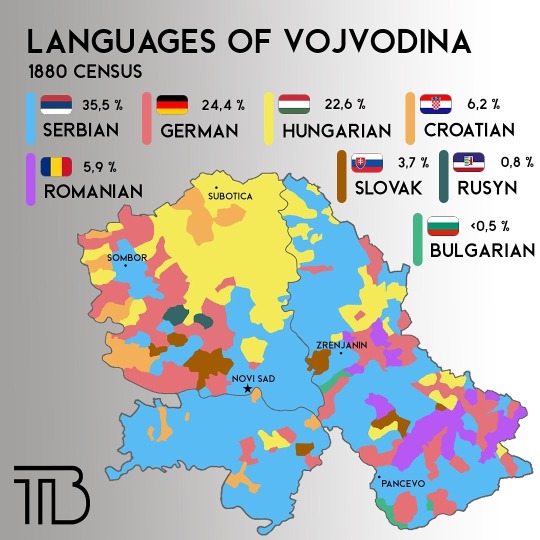
Languages of Vojvodina, 1880.
by try.balkan
59 notes
·
View notes
Text
Pokraj mene više nisi, čamcem plovim sam po Tisi...
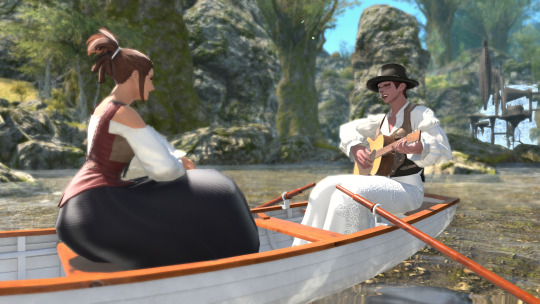

Al' još te uvek volim ja...
Posing some soft lesbians after being inspired by an old Yugoslav song - "Čamac na Tisi". Also, Matheli's clothes are inspired by male traditional clothes from Vojvodina (I tried giving Jia female traditional clothes, but couldn't find anything similar sadly)
youtube
^ this is the song in question btw, give it a listen if you want to!
#ffxiv#roegadyn#femroe#hyur highlander#balkan music#vojvodina#traditional clothing#gpose#oc: Matheli#oc: Thanira
42 notes
·
View notes
Text
I know I'm a nerd because the amount of time I've spent obsessing over the Vojvodina dress is. Way too much.
This dress doesn't actually have a name (probably), but it's from late 19th century Vojvodina, and I kind of obsessed over it when I was at the Serbian Ethnographic Museum in Belgrade (main site is available only in Serbian).
(Unfortunately, I'm trying to work within the tumblr image limit, but here's a google drive!)
BTW, if you enjoy this post, please consider leaving a tip! I spent more time than is reasonable putting this together.
Also, due to tumblr being Odd, you may want to open this in a new tab to avoid having the posts expand to full; the dashboard view only lets there be one image per line, for some reason. If you open in a new tab, they are much more neatly organized into sets, and quicker to scroll past.
Due to the fact that I can't really describe these photos in a way that means anything to readers unless they have a large technical vocabulary or background in Balkan fashion history, and there being so many pictures, I will not be including image descriptions. However, my commentary on those photos throughout the latter half of the post should hopefully give you a solid summary on what the photos contain, even if it's not going into details for most.
Here is the general shape of what you see in 19th century Serbia (incl. Kosovo), Montenegro, Bosnia&Herzegovina, and Croatia:




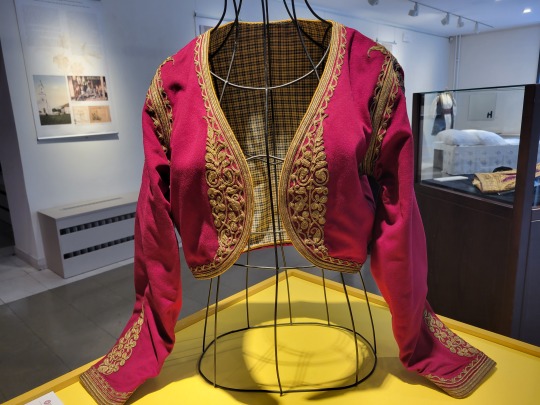
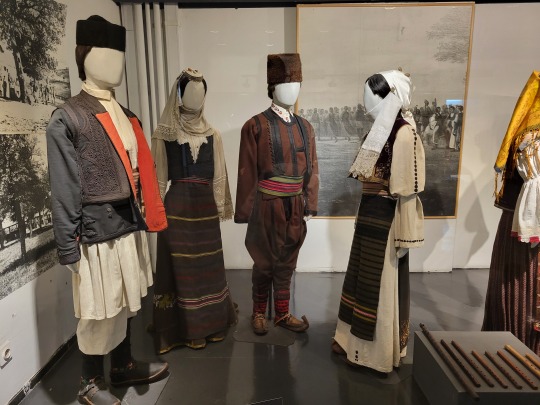



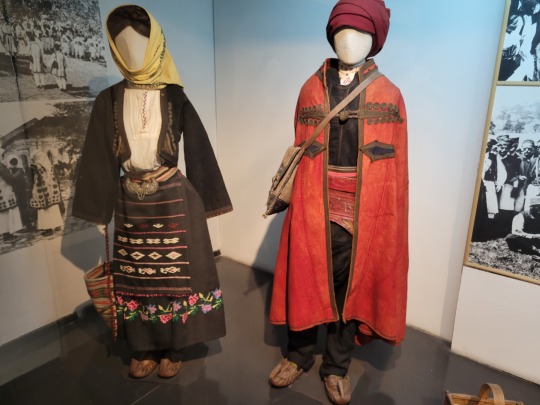
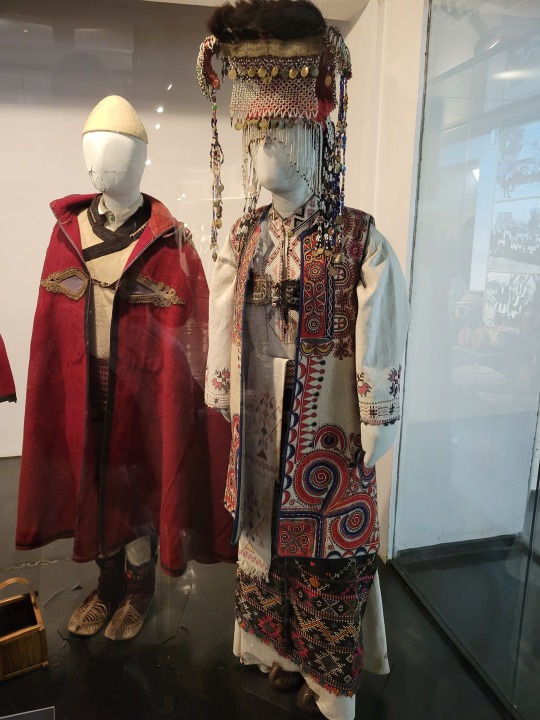

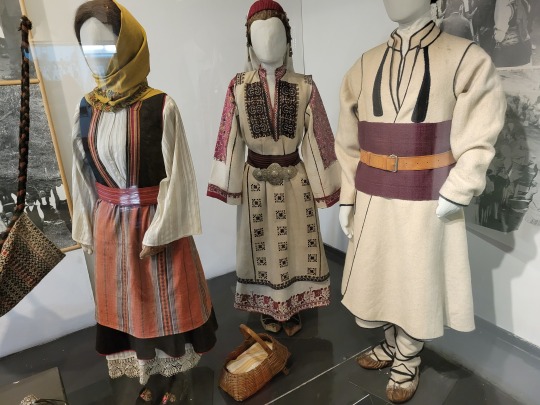
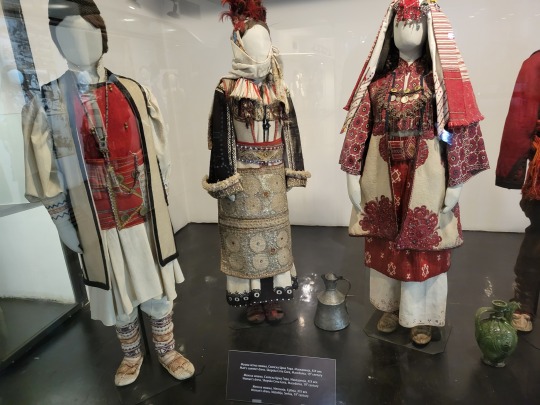


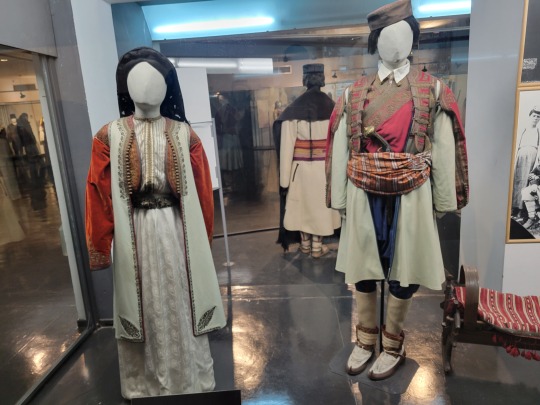
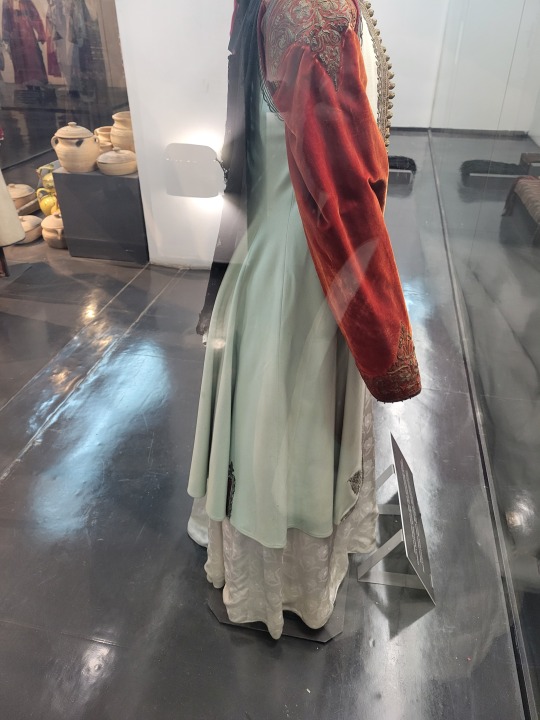
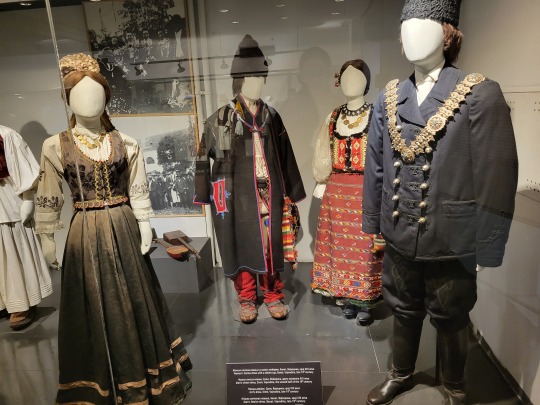

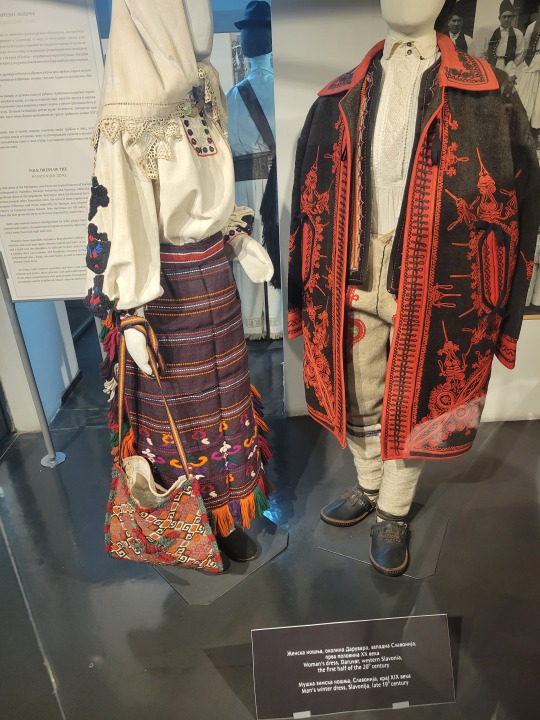
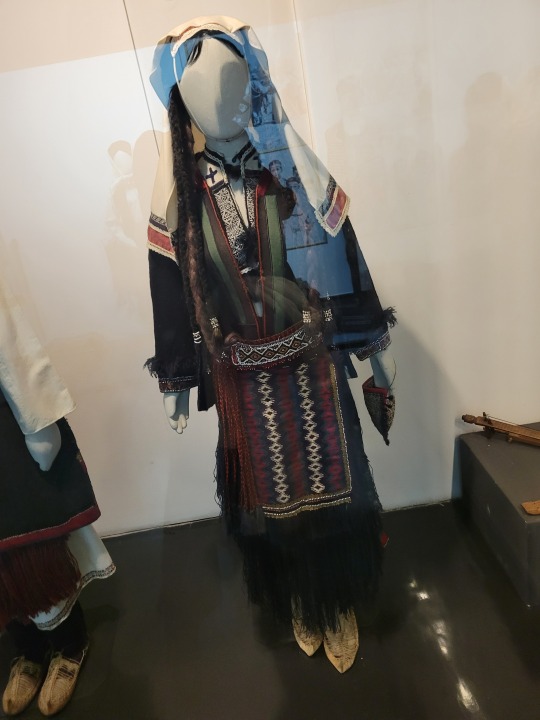
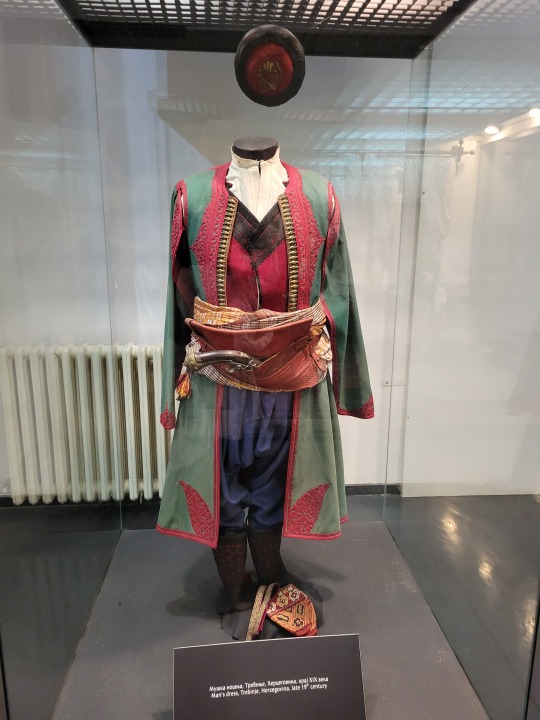

You can see a few throughlines, even with the variety from one region to the next. Certain types of fabric are more common, especially that heavy plain-weave white fiber (I think usually cotton, nowadays, but probably historically flax) with the small knots; my grandmother's apartment is still stocked with that as the default bed linen! You see it all through the exhibit, most frequently in the skirts, but often for blouses or chemises, too.
There are a lot of hand-woven fabrics, which you can see on display best with the aprons, and a very specific style of applique trimmings on the cropped vest. The arm's eyes and necklines have similar proportions. The lengths are similar. Most things are cut on the rectangular, or not cut at all. Hems are often tassled, for complex weaves, or simply folded under for the white base fabrics; plain, non-white fabrics tend to get a textured applique at the hems. Lace is usually eyelet.
There are exceptions, of course. I'd love to know more about that mint green cardigan(?) from Montenegro, with the gored pieces. I think it's made of doeskin (the tight wool weave, not the leather), and I wish I could get more information on the history. Most of the larger green dyes, not counting floral motifs or minor elements of a multicolored weave, are from the Bosnian section of the display (wide stripes along the collar, for instance), presumably due to Ottoman influence leaving a large Muslim population. And then there's this mint green cardigan from Montenegro made of a fabric I'm not seeing on any other garments? Tell me more, please.
(Also, in the close-ups, you can see that the hook and eye closure has released rust stains onto the blouse!)
There are so many more pictures, but unfortunately, I have a thirty-image max and really want to talk about this one specific dress:
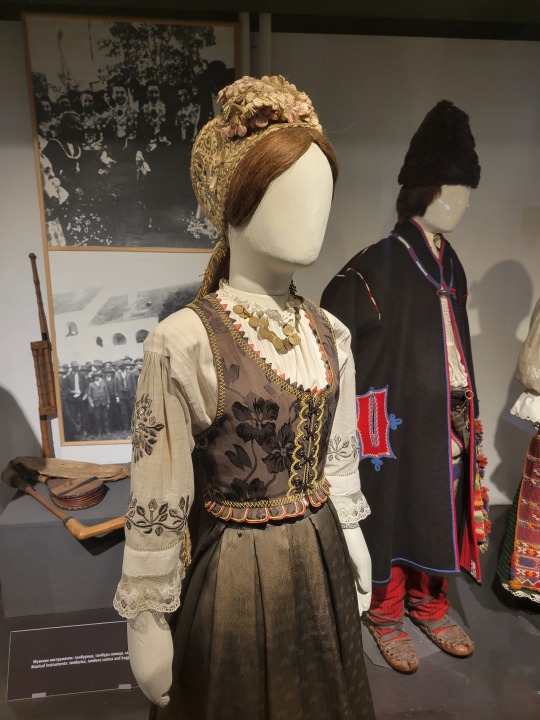

The image description on the floor below describes this as:
Woman's festive dress with a zlatara cap, Banat, Vojvodina, late 19th century
(I have minimal commentary on the hat. It's a traditionally Serbian vestment, but there's nothing too unusual about it.)
So, here are a few things to note at first glance:
The arm's eye on the vest is wide. It dips further in towards the neck than most vests, and swoops further down towards the ribs. Most of the traditional vests have a much tighter arm's eye.
Relatedly, the straps are much thinner than most of the vests, maybe half as wide. This is partly the arm's eye, and partly the width of the neckline to start!
The vest comes down in a slightly pointed oval ending at the swell of the bust, rather than curving back up or being a rounded shape a few inches higher. It's also finished with these little satin triangles?
The vest is laced at front, rather than hook and eye closure.
The bottom edge has tabs!
The hems on those tabs are chain stitched in yellow, and then the hem is wrapped in a thin orange ribbon that I would hesitantly say is satin? Plus all the other yellow embroidery, which to my eye looks really different from the embroidery you see on various aprons, and also different from the metallic appliques you see on most vests!
That bottom edge also appears to be straight across (most of the vests curve up slightly at front), and is very tight to the body. While some of the vests are tight, those are generally the shorter ones. Longer vests are much looser than this one, which cuts off and cinches at the waist, right where it meets the skirt.
The fabric itself! I'll get back to this but it seems to be a satin jacquard??? A jacquard that matches (in thread, not in pattern) to the skirt? Insane.
[Disclaimer: Some of these deviations, such as the arm's eye size or the dropped shoulder hem, could be a matter of the mannequin being the wrong size for the clothing. Unfortunately, I don't have enough background information to be sure. It could be just the right size. It could be far too small. I only have these photos and the most basic of background information to go off of.]
Okay moving on to the blouse:
It's not completely unique to be sheer, but it's definitely uncommon!
The chest is not pintucked or a flat weave, but rather the sheer fabric has thin stripes of more opaque weave? I don't actually remember what that's called but it's definitely cool to see.
We also see a net lace at the cuffs, which is similarly uncommon; most of the fashions I saw had eyelet lace instead (which we can see at the collar of the blouse).
The dropped shoulder! The shoulder seam sits much higher on most of the pieces I saw (there are a few exceptions, but mostly from regions nearby). In fact, most of the examples had the shoulder seam hidden, between the higher seam and the width of the vest; it's both the dropped seam and the thin straps of the vest that let us see this here!
That metallic embroidery. Again, most of the embroidery we see on the other pieces is cross stitch or done with a much thicker thread; sometimes, you get lineart, but not filled in in this manner. This kind of thin-thread embroidery that fills the space between the lines isn't common in the other pieces!
I don't think I can actually say much about the sleeve length? I feel like most of the pieces have sleeves that are full or bracelet length, while this one is a three-quarter, but I'm not 100% on that actually being true. It's a bit hard to tell in some cases. Might just be summer clothes?
The skirt:
SATIN JACQUARD
BOX PLEATS
SLIGHT OVAL HEM
SATIN RIBBON TRIM
I'm gonna be honest this was a huge part of why I began to obsess over this dress let me just. Whoo!
This fabric is, as far as I can tell, a satin jacquard, very probably machine-woven. It is very different from basically every other fabric we see in this exhibit. This is not a plain weave, and it is not a hand-woven design. This is a meticulously, mechanically repetitive pattern done using satin-weave manipulation to adjust which sections have shine and which don't. Given the time period, it's probably silk. (Take a look at this portion of a video on silk by Nicole Rudolph to understand what I mean by jacquard. If you want to know more about satin weave, you can watch the full video.)
I'd guess that the vest is made of the same type of fabric, even the same threads, just in a different pattern.
The pleating! If you take a look at the other photos, the general pattern is 'put together some rectangles, gather at top, and you have a dress. Cover with a hand-woven apron in front and possibly in back.' There are, again, some exceptions, but this dress has both the box pleating and the satin jacquard. The structure of this skirt is completely different from 90% of this exhibit.
In conjunction with the pleating, the skirt had a very slight oval shape around the bottom. I didn't get a good photo of that part, but it's typical of 1890s dresses in Western Europe to have a sort of egg-shaped hem if you look at them from above, through use of pleating, strategic panel shapes, and bum pads or petticoats. In short, the dress is just slightly longer at back without being a full-on train. Most of the other pieces, due to the rectangles and gathers, are a much simpler circle shape around bottom.
Length! Part of why the egg-shaped hem is happening is because this dress actually brushes the floor. Ankle-length is the default across the exhibit, even for formal wear.
Simple satin ribbons for decorative trim, rather than something textured, shaped, or multicolor!
Then, the actual hem of the skirt: a center-pleated green ribbon. This is, again, really different from most of the hems. Most of the skirts don't reach the ground, and aren't made of a fancy fabric. Those white dresses/skirts that form the base of most looks are easily washed and have hems that don't drag on the ground. If they aren't left to just the selvage, they're very simply hemmed; I think what I saw most frequently was a double-folded hem. The pieces that have more decorative hems, like blouses and vests and aprons, aren't pieces that get the same form of wear.
However, since this dress does reach the ground, it needs a centimeter or so of additional fabric to take some of that wear to protect the fancier skirt fabric, like hem braid, which the easily-replaced ribbon could conceal for this skirt since it's a festival item.
I think that might also be part of why there's a seam about twenty centimeters up from the bottom edge; it's a replaceable section in case it needs replacement, or the seam is for a protective layer inside. However, it could also be a seam used for a stiff inner lining meant to help the skirt flare out just a touch, like this.
Now, finally, why is all this even a thing, and why do I care?
Vojvodina, the region this outfit is from, was under Austro-Hungarian control during the latter half of the 19th century; whether it was officially Hungarian, Austrian, or both changed from one decade to the next, but it was definitely under that sphere of influence for a very long time. Despite this, it was and is culturally Serbian, and is majority Serbian in terms of population; it was even back then! However, the 19th century saw a large number of ethnic Hungarians and ethnic Germans in the region as well, and the cultural impact from Vienna was not to be underestimated.
This dress is a great example of how a culturally Serbian individual would have clothing that integrated those foreign influences. For most of the Balkans, the greatest influence was the Ottomans, due to five centuries of imperial rule, but this dress is a great contrast due to Hungarian occupation, and then Austrian. It contains elements of the culture that birthed it, yes, but the influence of the West is so very, very clear.
(I wish I could talk more about the Pannonian elements in general, but I'm still learning.)
I hope you enjoyed this rambling deep dive into a single outfit from the Serbian Ethnographic Museum. Visit it if you get a chance!
And if you've read this whole thing and feel like dropping a tip, you can do so on this blog, post, or over on ko-fi. You could even join my Patreon!
#serbia#vojvodina#fashion#fashion history#the vojvodina dress#serbian stuff#balkan stuff#balkans#Banat#Hungary#Austria Hungary#austro hungarian empire#phoenix posts
171 notes
·
View notes
Text
Men's traditional headwear from Yugoslavia

🔸Šajkača - the most common Serbian hat, especially worn in central Serbia
🔸Šibenska kapa (Šibenik cap)- a Croatian hat, usually worn in Dalmatia
🔸 Lička kapa (Lika cap) - worn in Lika, Kordun, mountainous region of northern Dalmatia and some other
🔸 Crnogorska kapa (Montenegrin cap) - worn in Montenegro
🔸 Fes (fez) - worn in in many parts of Yugoslavia, especially Bosnia
🔸 Turban - also worn in many parts of Yugoslavia, especially culturally important in Bosnia
🔸 Šubara - wooly hat, most commonly worn in mountainous areas of Serbia
🔸 Šešir / klobuk / kalap (box-hat) - a hat with indented top giving it a boxy shape, worn in Pannonian region and Slovenia
🔸 Škrlak (Pannonian hat) - dome shaped hat, worn in Pannonian region
🔸 Кумановски крпи (Kumanovo headscarf) - cloth worn as a headscarf in Kumanovo (Macedonia)
🔸 Qeleshe - Albanian cap, worn by Albanians in Kosovo, Montenegro, Macedonia and other
🔸 Kašula - a hat worn by Vlach/Aromanian people in eastern Serbia and Macedonia
#art#digital art#yugoslavia#balkan#serbia#croatia#slovenia#bosnia#montenegro#macedonia#vojvodina#kosovo#ethnography#folk dress#hats
306 notes
·
View notes
Text
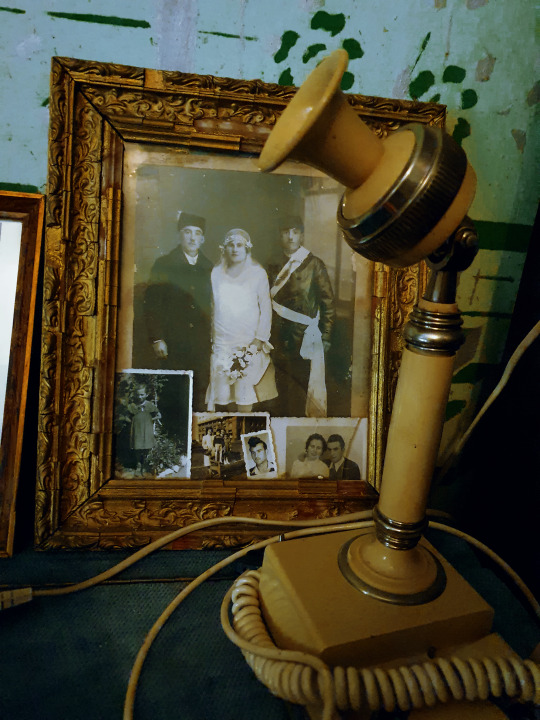
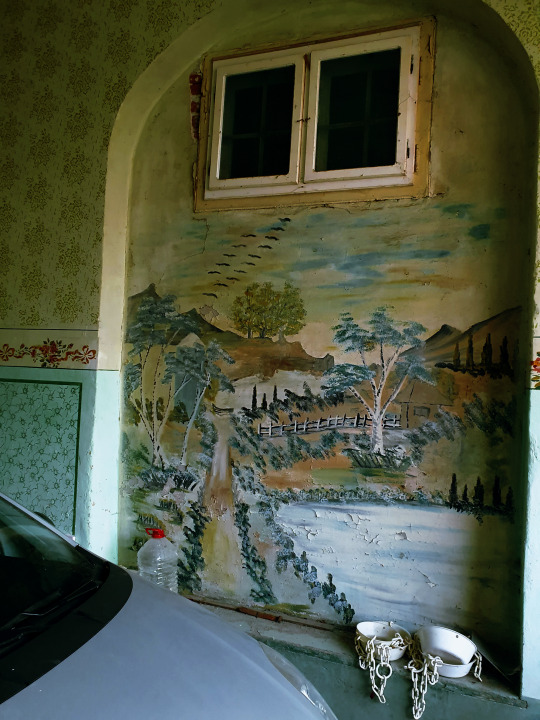

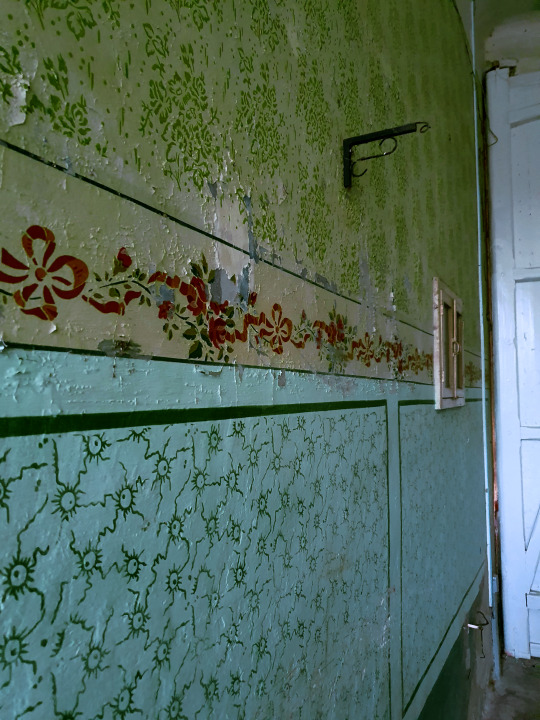
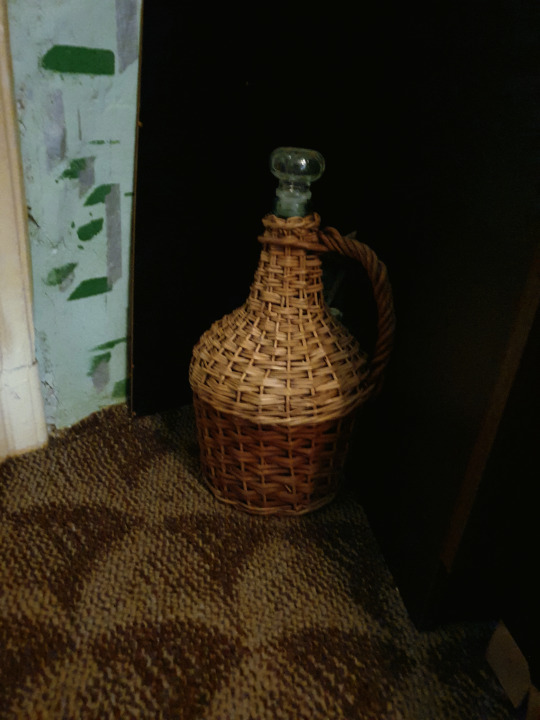
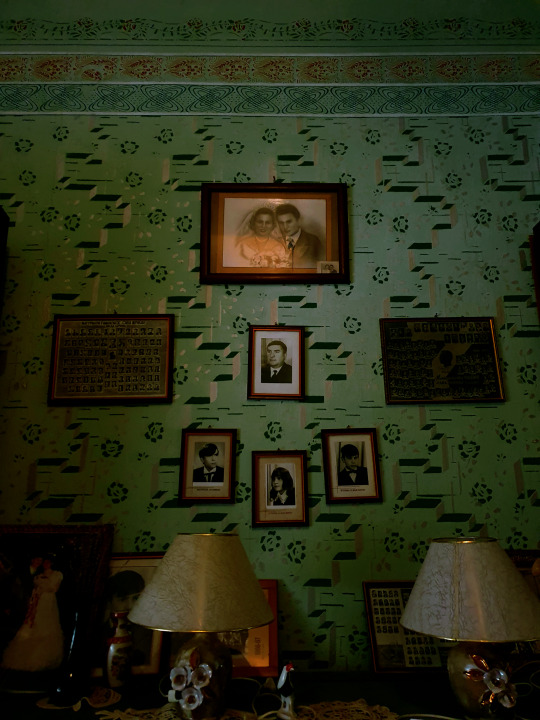
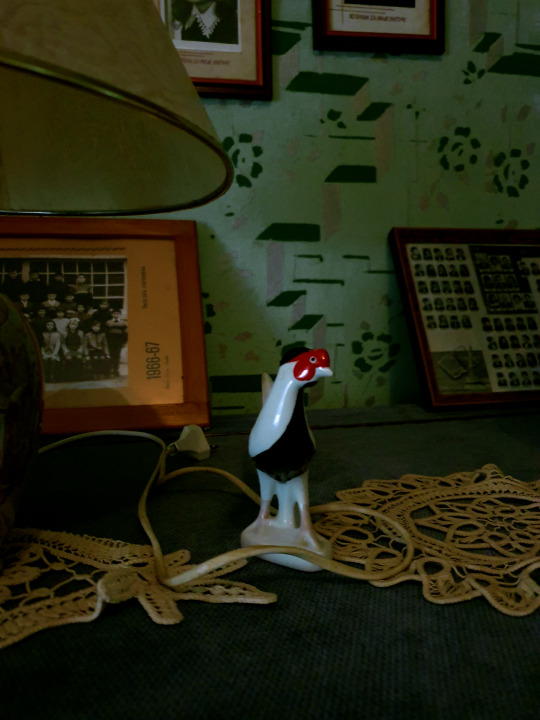
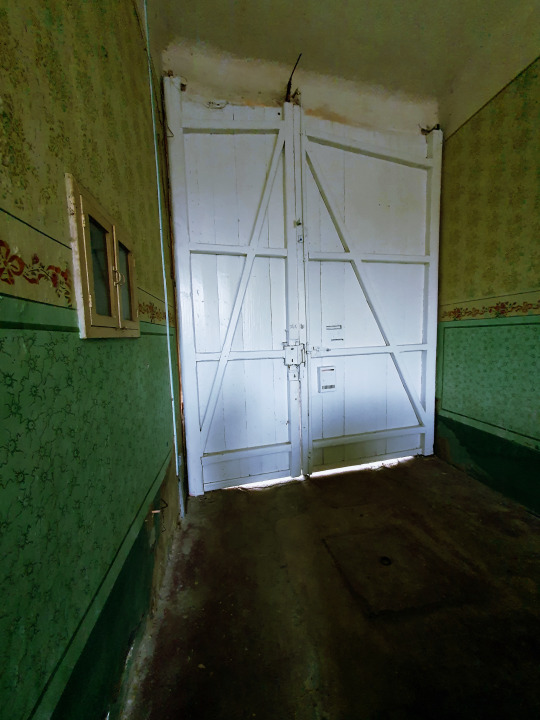


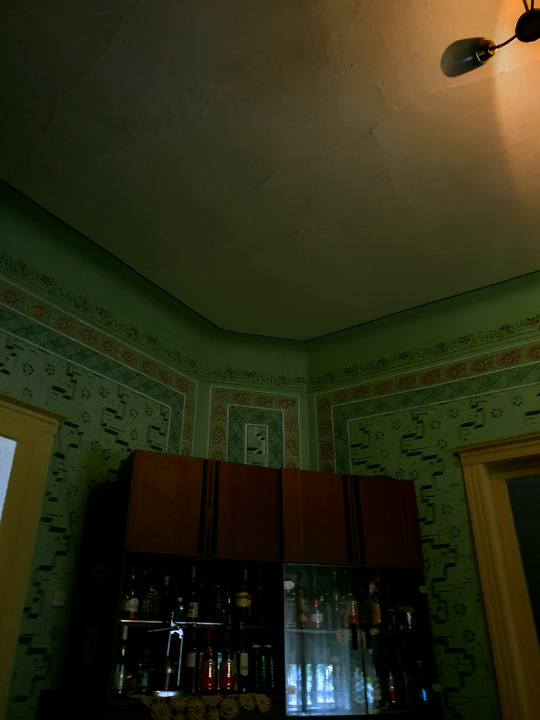
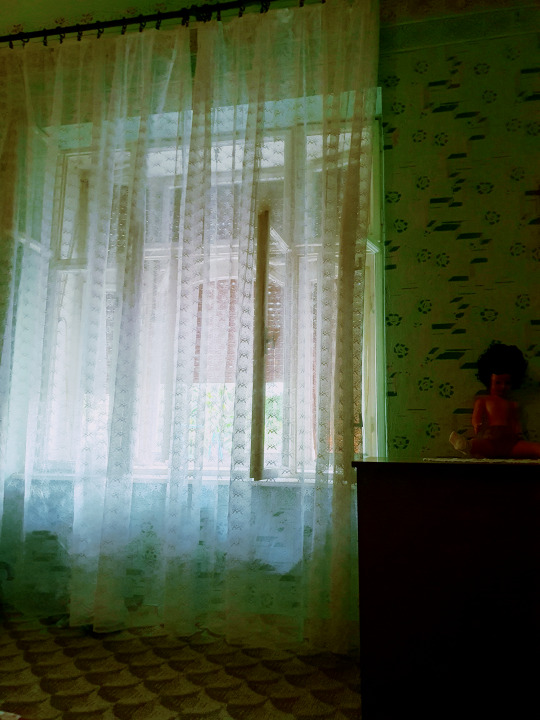
Bela Crkva, Serbia.
x
39 notes
·
View notes
Text

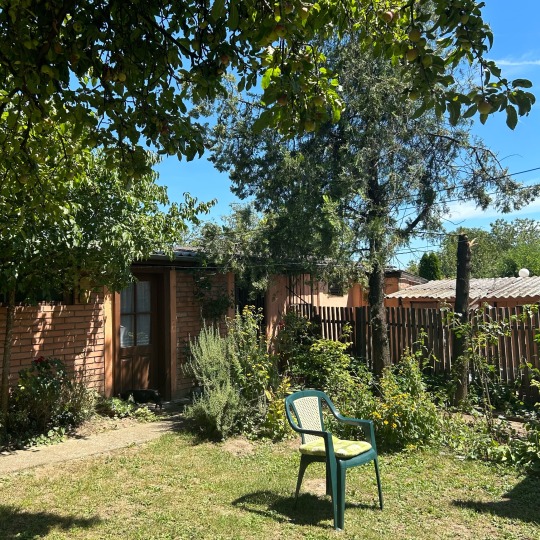


grandma's house
66 notes
·
View notes
Text

◾Portrait of a young Serbian woman with ducats, Stapar, 1912.
#serbian#Serbia#Vojvodina#Stapar#Bačka#Serbian traditional clothes#Serbian beauty#Retro Serbia#Vintage Serbia#Serbian folk
461 notes
·
View notes
Text
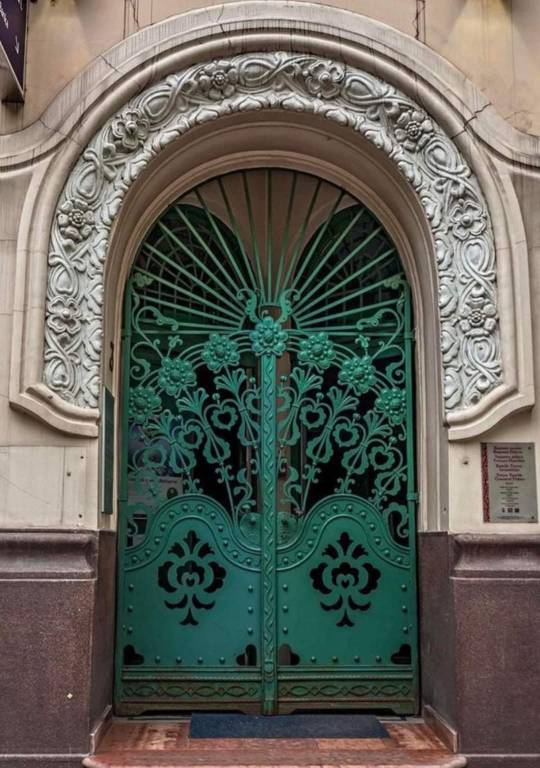
Beautiful door in Subotica, Vojvodina, SERBIA
61 notes
·
View notes
Text

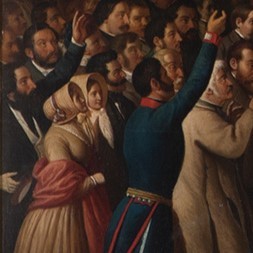

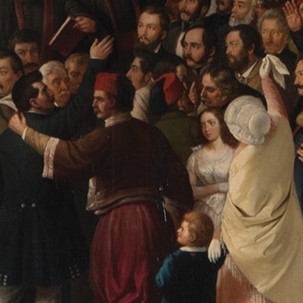
Павле Симић - Српска народна скупштина 1. маја 1848.
Pavle Simić - Serbian national assembly 1st of May 1848.
#pavle simic#pavle simić#serbian art#serbian history#serbian painters#19th century art#19th century#painting#art#history#serbia#vojvodina
63 notes
·
View notes
Text

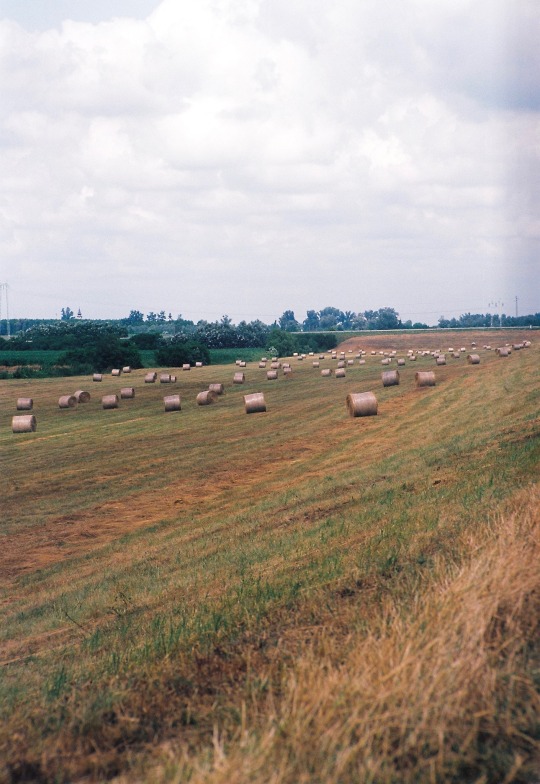


Freshly developed
canon ae-1 / kodak ektar 100 / lens: canon fd 50mm
@grainy.diaries
#analog photography#analog#film photography#film#35mm#35mmclub#europe#mine#summer#serbia#novi sad#countryside#city#canonae1#kodak ektar 100#vojvodina#analog camera
24 notes
·
View notes
Text

proleće
#photography#analog#photographers on tumblr#la vie en rose#original photographers#analog photography#photooftheday#la vie est belle#original photography blog#photography on tumblr#la vie boheme#la vita è bella#la dolce vita#indie#retro#aesthetic#bohemian#boho#bohostyle#bohochic#spring#trees#nature#may#green#plants#kastel ecka#kastel#vojvodina#srbija
28 notes
·
View notes
Photo
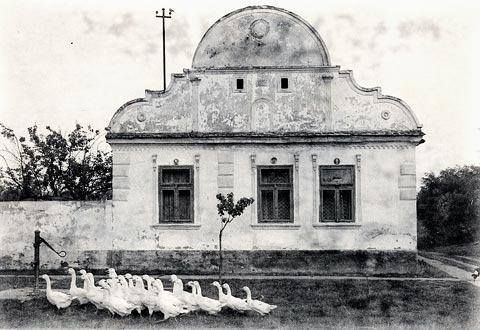
Vojvodina, Serbia
photographer unknown
#Srbija#Serbia#black and white photography#blackandwhitephotography#analog photography#vintage photography#film photography#film#vojvodina#baroque#secession#geese#Architecture
38 notes
·
View notes
Text
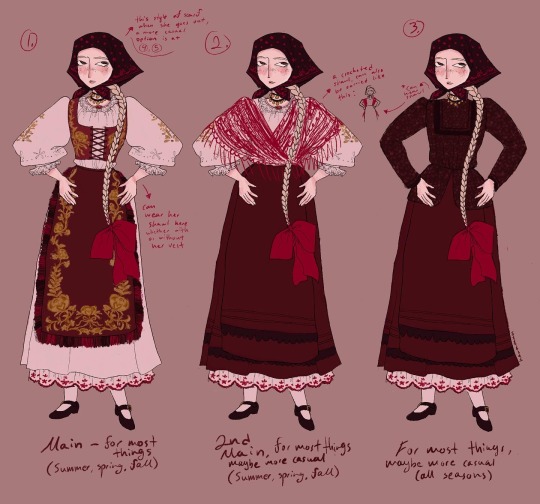
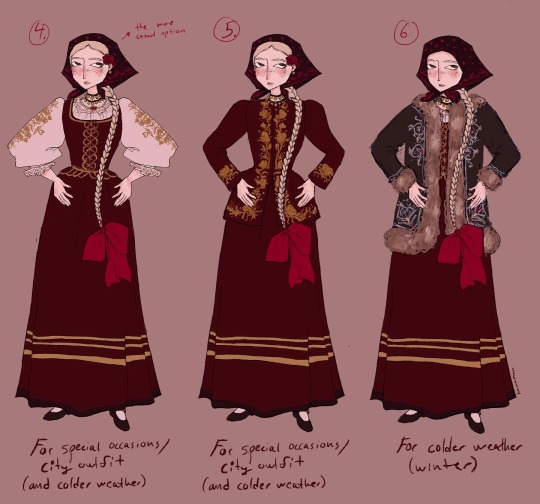
as red as a sour cherry! (her name is probably višnja)
update: i just wanted to write that these are more character design explorations than an actual showcase of folk costume from the banat region of vojvodina, they definitely aren’t 100% accurate and i am actually still working on these!
#my art#artists on tumblr#digital art#character design#original art#original character#hawamun ocs#vojvodina#banat#serbian#folklore#vampire#traditional clothing#i actually got the chance to talk to somebody professional about banat folk costume#and i will redesign these to be more accurate because some of them are a little bit too imaginary for my liking#however it is nice to see that people enjoy these designs so far!
84 notes
·
View notes
Text
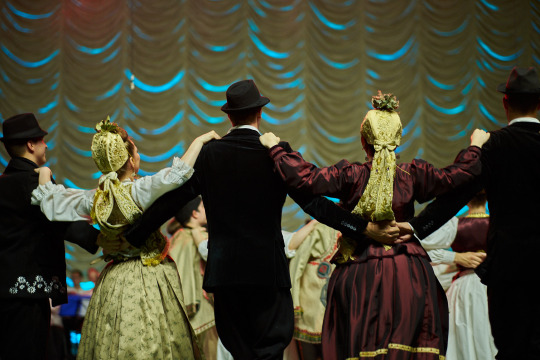

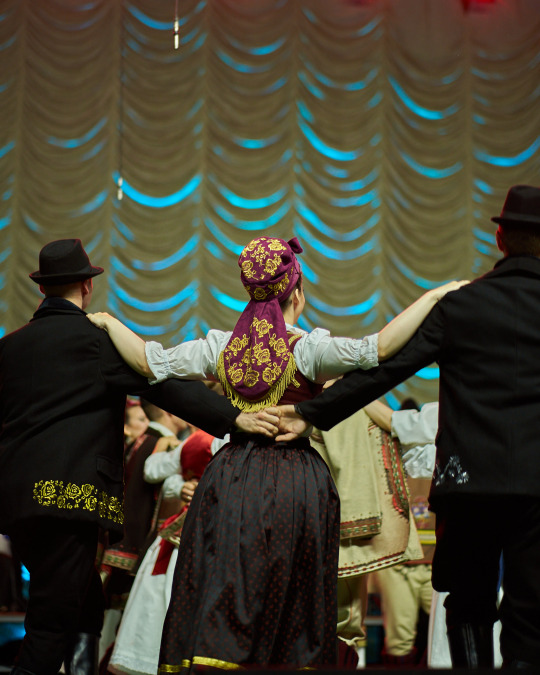
Traditional clothing from Banat, Serbia
FA “Vila” Novi Sad
#serbia#srbija#personal#photography#my photography#concert photography#traditional clothing#balkan#serbian culture#tradition#banat#vojvodina#nosnja#narodna nosnja
18 notes
·
View notes